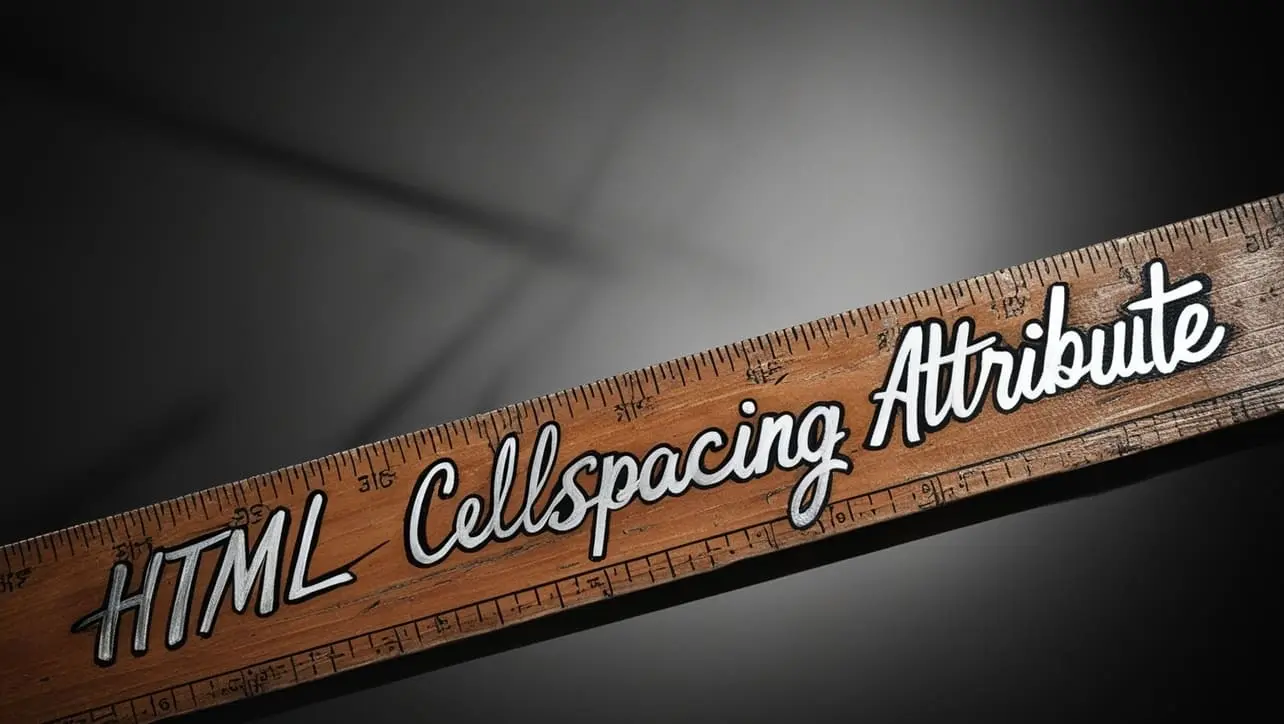
HTML Topics
- HTML Intro
- HTML Basic
- HTML Editors
- HTML CSS
- HTML Tags
- HTML Deprecated Tags
- HTML Events
- HTML Event Attributes
- HTML Global Attributes
- HTML Attributes
- abbr
- accept
- accept-charset
- accesskey
- action
- align
- alt
- archive
- as
- async
- autocapitalize
- autocomplete
- autofocus
- autoplay
- axis
- bgcolor
- border
- cellpadding
- cellspacing
- char
- charoff
- charset
- checked
- cite
- class
- classid
- codebase
- codetype
- color
- cols
- colspan
- compact
- content
- contenteditable
- controls
- coords
- crossorigin
- data
- data-*
- datetime
- declare
- default
- defer
- dir
- dirname
- disabled
- download
- draggable
- enctype
- enterkeyhint
- for
- form
- formaction
- formenctype
- formmethod
- formnovalidate
- formtarget
- frame
- frameborder
- frameset
- headers
- height
- hidden
- high
- href
- hreflang
- hspace
- http-equiv
- id
- inert
- inputmode
- ismap
- kind
- label
- lang
- list
- loop
- low
- max
- maxlength
- media
- method
- min
- multiple
- muted
- name
- novalidate
- onabort
- onafterprint
- onbeforeprint
- onbeforeunload
- onblur
- oncanplay
- oncanplaythrough
- onchange
- onclick
- oncontextmenu
- oncopy
- oncuechange
- oncut
- ondblclick
- ondrag
- ondragend
- ondragenter
- ondragleave
- ondragover
- ondragstart
- ondrop
- ondurationchange
- onemptied
- onended
- onerror
- onfocus
- onhashchange
- oninput
- oninvalid
- onkeydown
- onkeypress
- onkeyup
- onload
- onloadeddata
- onloadedmetadata
- onloadstart
- onmousedown
- onmousemove
- onmouseout
- onmouseover
- onmouseup
- onmousewheel
- onoffline
- ononline
- onpagehide
- onpageshow
- onpaste
- onpause
- onplay
- onplaying
- onpopstate
- onprogress
- onratechange
- onreset
- onresize
- onscroll
- onsearch
- onseeked
- onseeking
- onselect
- onstalled
- onstorage
- onsubmit
- onsuspend
- ontimeupdate
- ontoggle
- onunload
- onvolumechange
- onwaiting
- onwheel
- open
- optimum
- pattern
- placeholder
- popover
- popovertarget
- popovertargetaction
- poster
- preload
- readonly
- rel
- required
- reversed
- rows
- rowspan
- sandbox
- scope
- selected
- shape
- size
- sizes
- span
- spellcheck
- src
- srcdoc
- srclang
- srcset
- start
- step
- style
- tabindex
- target
- title
- translate
- type
- usemap
- value
- width
- wrap
- HTML Comments
- HTML Entity
- HTML Head
- HTML Form
- HTML IndexedDB
- HTML Drag & Drop
- HTML Geolocation
- HTML Canvas
- HTML Status Code
- HTML Language Code
- HTML Country Code
- HTML Charset
- MIME Types
HTML cellspacing Attribute

Photo Credit to CodeToFun
🙋 Introduction
The cellspacing attribute is an attribute in HTML used within the <table> element to define the spacing between cells in a table. It allows developers to control the amount of space between adjacent cells both vertically and horizontally.
🎯 Purpose of cellspacing Attribute
The primary purpose of the cellspacing attribute is to adjust the visual presentation of tables by specifying the amount of space between table cells. This can help improve readability and aesthetics of the table layout.
💎 Values
The cellspacing attribute accepts numerical values, typically in pixels, to determine the amount of space between cells. Common values include integers representing the number of pixels for the desired spacing. A value of "0" (zero) removes any spacing between cells, effectively making them appear adjacent to each other.
📄 Implementation Example:
Let's see how the cellspacing attribute can be used in an HTML table:
<table cellspacing="10">
<tr>
<td>Row 1, Cell 1</td>
<td>Row 1, Cell 2</td>
</tr>
<tr>
<td>Row 2, Cell 1</td>
<td>Row 2, Cell 2</td>
</tr>
</table>🧠 How it Works
In this example, the cellspacing attribute is set to "10", which means there will be 10 pixels of space between each cell in the table.
🔄 Dynamic Values with JavaScript
You can also dynamically adjust the cellspacing attribute using JavaScript. This can be useful when you want to change the spacing based on certain conditions or user interactions. Here's a simple example:
<script>
// Dynamically set cellspacing for a table
document.getElementById("dynamicTable").cellspacing = "5";
</script>🧠 How it Works
In this script, the cellspacing attribute of a table with the id "dynamicTable" is set to "5", effectively changing the spacing between cells to 5 pixels.
🏆 Best Practices
- Use cellspacing judiciously to enhance the visual presentation of tables without cluttering the layout with excessive space.
- Test the appearance of tables with different cellspacing values to find the optimal spacing for your design.
- Remember that excessive spacing may lead to tables occupying more space on the page, so balance aesthetics with functionality.
🎉 Conclusion
The cellspacing attribute is a useful tool for adjusting the spacing between cells in HTML tables.
By understanding its purpose and values, you can effectively control the layout and presentation of tabular data on your web pages.
👨💻 Join our Community:
Author

For over eight years, I worked as a full-stack web developer. Now, I have chosen my profession as a full-time blogger at codetofun.com.
Buy me a coffee to make codetofun.com free for everyone.
Buy me a Coffee












If you have any doubts regarding this article (HTML cellspacing Attribute), please comment here. I will help you immediately.